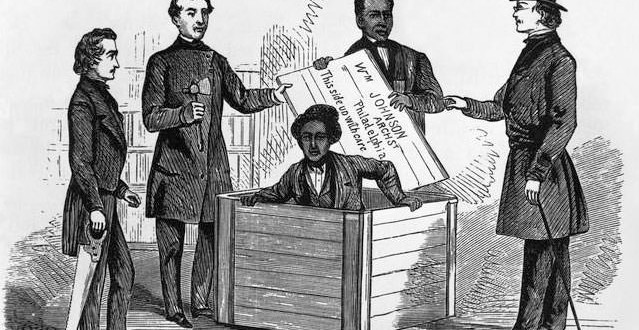Henry Box Brown was an abolitionist lecturer and performer. Born a slave in Louisa County, he worked in a Richmond tobacco factory and lived in a rented house. Then, in 1848, his wife, who was owned by another master and who was pregnant with their fourth child, was sold away to North Carolina, along with their children.
Brown resolved to escape from slavery and enlisted the help of a free black and a white slaveowner, who conspired to ship him in a box to Philadelphia. In March 1849 the package was accepted there by a leader of the Pennsylvania Anti-Slavery Society. As a free man, Brown lectured across New England on the evils of slavery and participated in the publication of the Narrative of Henry Box Brown (1849).
In 1850, a moving panorama, Henry Box Brown’s Mirror of Slavery, opened in Boston. That same year, Brown, worried that he might be re-enslaved, moved to England, where he lectured, presented his panorama, and performed as a hypnotist. In 1875, he returned to the United States with his wife and daughter Annie and performed as a magician. Brown’s date and place of death are unknown, but his legacy as a symbol of the Underground Railroad and enslaved African Americans’ thirst for freedom is secure.
 Canada Journal – News of the World Articles and videos to bring you the biggest Canadian news stories from across the country every day
Canada Journal – News of the World Articles and videos to bring you the biggest Canadian news stories from across the country every day



